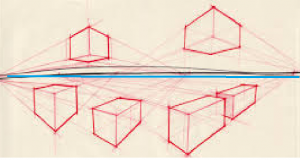 I’m currently enrolled in a yoga teacher training where the group is always tasked with home-play (homework) to finish off the course of the duration between sessions. This time, our home-play was to inquire into the nature of a person’s interaction or response during our interactions.
I’m currently enrolled in a yoga teacher training where the group is always tasked with home-play (homework) to finish off the course of the duration between sessions. This time, our home-play was to inquire into the nature of a person’s interaction or response during our interactions.
The inquiry is something along the line of, “What must that person think, to think that way.”
When I first started this practice, the first thing I found is that my answer always seemed to be rooted in the other person’s perspective. I found that I immediately went there. Perspective. It’s always perspective. But , deeper thinking when asking myself,
“What must this person think, to think that way?”
Began to lead me to seeing the possibilities that influenced perspective. I began to categorize from the most seemingly superficial, the more visceral.
Assumptions – Typically, the inquiry on my part was always a response to being surprised or shocked by a person’s statement or reaction. I always found this to be a miscommunication caused by an assumption on their part often in relation to judgment of character or stereotype. “Since you do yoga, I thought you would be ok in me choosing a vegan restaurant for our lunch meeting”
Presuppositions – A statement, response or question that takes presuppositions into account are typically harmless, but are along the same lines of assumptions. I person may infer from a statement on my part, a supposition, because I have not clearly communicated my intent. Entire discourses have been written on suppositions, their parts and theories as to why they exist. But for clarity, I’ll point out that a presupposition happens on the part of the person making an initial statement from which the presupposition was drawn. Typically it can be blamed on an assumed local context. “A person left their mat at the studio.” Being that I’m a yoga teacher, it would be assumed that I am talking about a yoga mat. Not a Pilates mat, door mat, straw mat, etc. But often we make mistakes in an assumed local context and presuppositions can and do arise.
Experiences – Any perspective will be saturated with hues of the human experience. And like our individuality differs from one person to next, so does our experiences. You and I may have great experiences when it comes to yoga, while another person may have received an injury from yoga and is very cautious on the subject.
Human Condition – We are all faced with the same human conditions from birth and eventually have to come to a realization of these traits. Jealousy, Greed, Fear, Desire, Anger, Hate, Attachment to name a few. As we mature, we begin to learn to work around these elements of the self, but not all at the same rate. And even so, we may have to interact with people who are at drastic age differences and at opposing stages of life. My 4 year old once told me “I hate you! You’re so mean.” Because I would not let her have fruit loops for dinner. This inquiry was easy. “Why would she say that?” She assumed I would say yes, She desires fruit loops, She got denied and she’s four years old. So, even though she had to sit in time out, I was not affected by her outburst of anger because from her perspective, it was a manner to express her displeasure for my decision.
Deeper Meanings – Simply asking what one must think in order to think that way is only a superficial inquiry and often there is a superficial answer. But, when the answer is not on the surface, Culture, Country of origin, Practices, Religion, Politics, Education, History, Experiences, Childhood, Family Roles, etc all come into play. Without knowledge of these dynamics that shape a person’s perspective, you may find yourself guessing at the root cause. And assuming a stance on another person’s perspective without relational knowledge to them is certainly going to lead to a false assumption.
The most difficult part of this practice was analysis of the process of the practice. It was easy to ask myself, “What must this person think to think that way?” and most of the time the answer was there. But when I began to dissect the practice and find a deeper meaning, it seemed futile and I thought that maybe I missed the whole point of it altogether. But as my experience in this process began to unfold, I started to see how the repetition (abhyasa) was a shortcut into compassion. We cannot have compassion without understanding and empathy. Compassion with a lack of understanding and empathy is just tolerance and tolerance is politically correct method of indifference. Just like practicing gratitude is a shortcut to having an open heart, I find practicing understanding another to be a shortcut to compassion. In an attempt to discover “What must a person think to think that way.” We begin to discover more about our interactions and the underlying motivations of others. Sometimes what we discover is in the context of bliss and goodness and other times the undertone seems to be of suffering and ignorance.
In as much, that there are innumerable methods that shape a person’s perspective, I also realize that each person practicing this process will come to differing summaries of this task. I’m interested to hear the perspectives of others, on this practice of realizing perspective.

